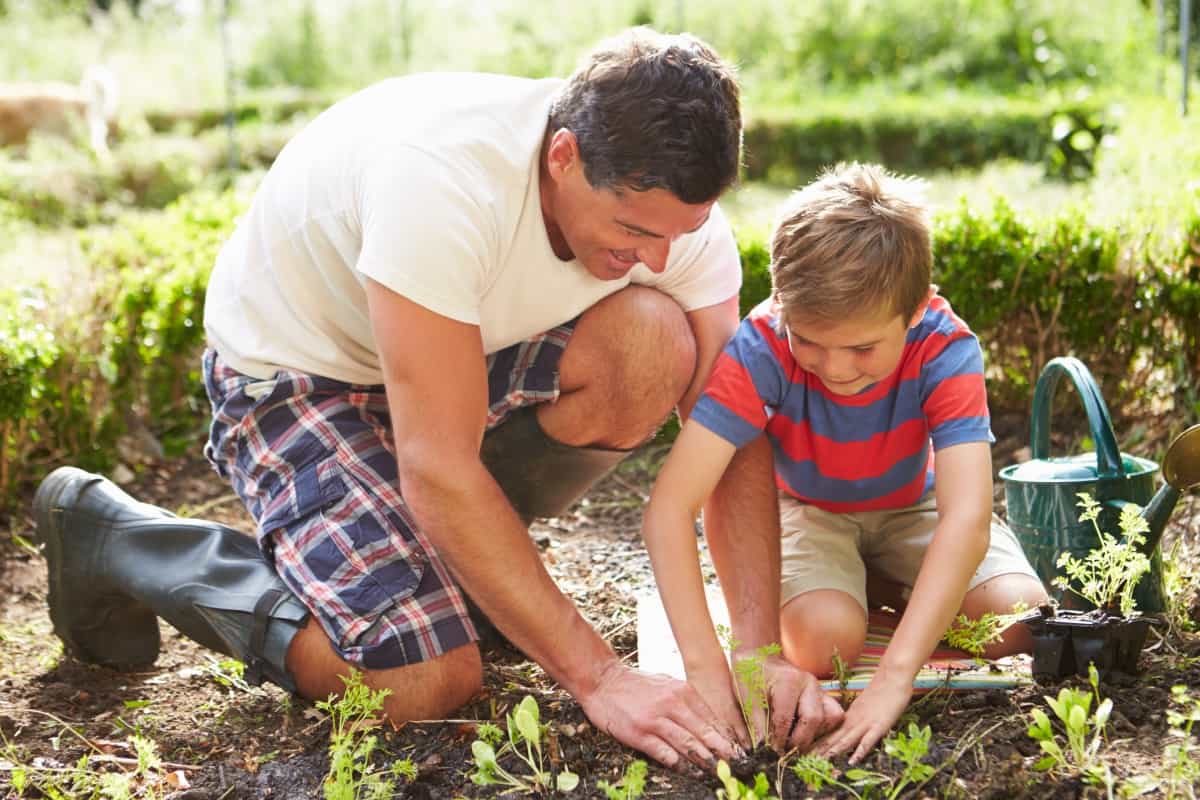Gardening is a fantastic way to introduce children to the wonders of nature, instill a sense of responsibility, and teach them valuable life skills.
Not only is it a fun and educational activity, but it's also a great way for families to bond and create lasting memories.
Here are 15 ways to help children enjoy gardening and cultivate their green thumbs.

1. Start small and simple

Begin with a small garden or container garden to avoid overwhelming young children. Choose easy-to-grow plants like sunflowers, marigolds, or cherry tomatoes to yield quick and gratifying results.
2. Give them their own space

Designate a specific garden area for your child to tend to, which will help them feel a sense of ownership and pride in their accomplishments.
3. Choose age-appropriate tasks

Assign tasks based on your child's age and abilities. For example, younger children can help with watering and planting seeds, while older children can assist with weeding and harvesting.
4. Make it educational

Take advantage of the learning opportunities gardening offers. Teach children about plant life cycles, soil composition, and the role of pollinators like bees and butterflies.
5. Encourage creativity

Allow your child to personalize their garden space with decorations like painted rocks, garden gnomes, or wind chimes—this will help make the garden feel like a special place they can call theirs.
6. Plant a rainbow

Choose a variety of colorful plants to make the garden visually appealing and teach children about different plant species. For example, plant red, yellow, and orange peppers; purple and green basil; and various shades of lettuce.
7. Grow kid-friendly plants

Select plants that are safe, easy to handle, and exciting for children. Some favorites include snap peas, strawberries, and cherry tomatoes, which can be eaten right off the vine.
8. Use child-sized tools

Equip your child with appropriately-sized tools, such as small shovels, rakes, and gloves, to make gardening tasks more manageable and enjoyable.
9. Create themed gardens

Design gardens around themes that will pique your child's interest, such as a pizza garden with tomatoes, basil, and peppers, or a butterfly garden with flowers that attract pollinators.
10. Encourage responsibility

Assign tasks that teach responsibility, like watering plants regularly, checking for pests, and maintaining a clean garden space.
11. Make it a family affair

Get the entire family involved in the gardening process. This fosters bonding and helps children understand the importance of teamwork.
12. Utilize planting zones

Teach children about planting zones and choose plants that will thrive in your region.
For example, if you live in Zone 7, opt for plants like kale, spinach, and carrots that can withstand cooler temperatures (more below).
13. Celebrate successes

Acknowledge and praise your child's accomplishments in the garden. This can include anything from a well-tended plot to a bountiful harvest.
14. Be patient and flexible

Understand that gardening with children may not always go as planned. Be prepared for mishaps, and use them as teachable moments to help your child learn from their mistakes.
15. Enjoy the fruits of their labor

Encourage children to cook or prepare meals using the produce they've grown—this will give them a sense of pride and accomplishment and deepen their appreciation for the food they eat.
Planting Zones

Understanding planting zones is essential to ensure that the plants you choose will thrive in your region.
The USDA Plant Hardiness Zone Map divides North America into 13 zones based on average annual minimum winter temperatures. Each zone is 10°F (5.6°C) warmer or colder than the adjacent zone.
To find your planting zone, visit the USDA website and enter your zip code.
When selecting plants for your child's garden, choose varieties well-suited to your region's climate and consider factors like sunlight, soil type, and moisture levels.
Choosing plants appropriate for your zone will increase the chance of a successful and enjoyable gardening experience.
For example, if you live in Zone 5, you might choose plants like broccoli, Brussels sprouts, and cucumbers that can tolerate cooler temperatures and shorter growing seasons.
If you live in Zone 9, opt for heat-loving plants like peppers, tomatoes, and okra that thrive in warmer climates.
Here are more fun articles to explore:
How To Grow Tomatoes On A Balcony
Do Green Beans Need A Trellis?
Are Sunflowers Hardy? [Here’s What This Plant Can Stand!]
Do Marigolds Like Coffee Grounds Or Eggshells?
Now It’s Time to Create Lasting Memories

Remember, gardening is an ongoing learning experience for both children and adults.
By following these 15 tips, you can create a fun and engaging gardening experience for children that will foster a love for nature and an appreciation for the environment.
Remember to be patient, adaptable, and, have fun as you nurture your child's green thumb and watch them grow alongside their garden.


